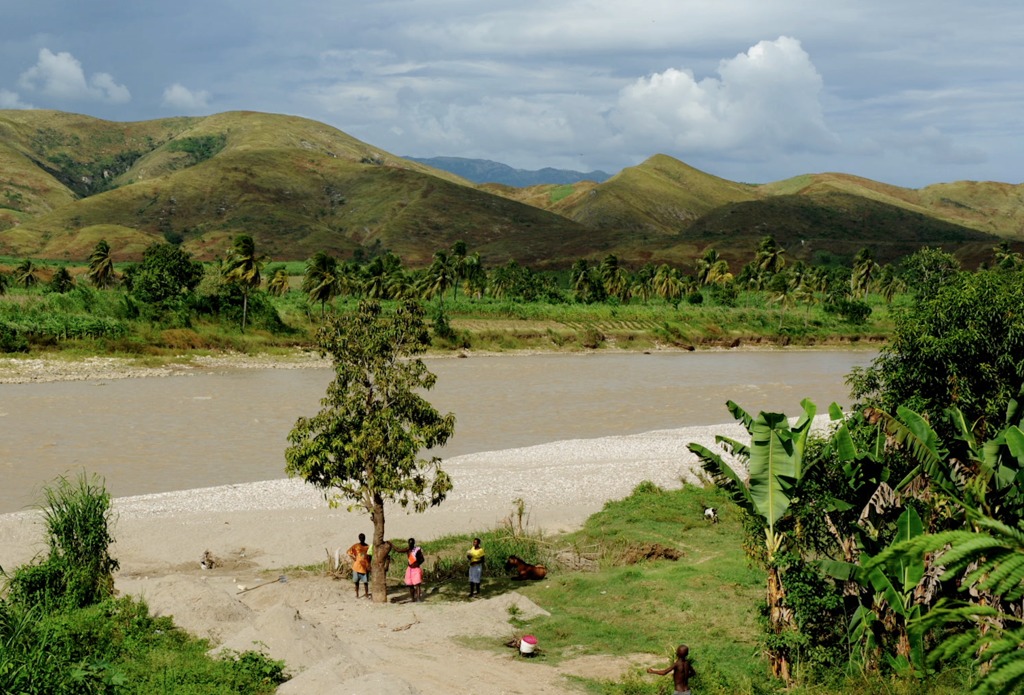Cholera Risk Maps
Cholera Risk, Pre-Hurricane
Diarrheal diseases such as cholera continue to be a public health threat. Prediction of an outbreak of diarrheal disease, specifically cholera, following a natural disaster remains a challenge, especially in regions lacking basic safe civil infrastructure [water, sanitation and hygiene (WASH)]. The underlying mechanism of a cholera outbreak is associated with disruption in the human access to safe WASH infrastructure that results in the population using unsafe water containing pathogenic vibrios. Presence and abundance of Vibrio cholerae, the causative agent of cholera, are related to modalities of the environment and regional weather as well as the climate systems. Major cholera outbreaks occur in two dominant forms: (a) epidemic, characterized by a sudden and sporadic occurrence of a large number of cholera cases and (b) endemic, in which human cholera cases occur on annual scales with distinct and characteristic seasonality. Natural disasters characteristically leave a trail of destruction, the result of which may be a human population deprived of access to WASH infrastructure. For example, under normal circumstances, the likelihood of a cholera outbreak is low, since the human population adapts to its specific behavioral pattern of water use. However, following a natural disaster, human behavior will change, if the availability, use pattern, and storage capacity of drinking water are altered as a result of the WASH infrastructure having been severely damaged and/or rendered unusable. Forecasting a cholera risk is challenging because of the lack of data on pathogen abundance in local water systems, weather and climate patterns and existing WASH infrastructure. Vibrios, including V. cholerae are autochthonous to the natural aquatic ecosystem, hence eradication is not feasible.
A new modeling approach using satellite data will likely to enhance our ability to develop cholera risk maps in several regions of the globe. The model (GCRM) is based on monthly air temperature, precipitation, availability of WASH infrastructure, population density and severity of natural disaster. The outputs of GCRM can be visualized on 0.10x0.10, with the hope of improving the spatial scale as new data products are incorporated into the model.
Temperature Anomaly, Pre-Hurricane
Monthly Precipitation Anomaly, Pre-Hurricane
Matthew Path, With Precipitation
Monthly Precipitation Anomaly, Post-Hurricane
Cholera Risk, Post-Hurricane

Dates

Temperature Anomaly Colorbar

Precipitation Anomaly Colorbar

Cholera Risk Colorbar
Credits
Please give credit for this item to:
NASA's Scientific Visualization Studio
-
Visualizer
- Trent L. Schindler (USRA)
-
Producer
- Ryan Fitzgibbons (USRA)
-
Scientist
- Antarpreet Jutla (West Virginia University)
Release date
This page was originally published on Tuesday, May 22, 2018.
This page was last updated on Wednesday, November 15, 2023 at 12:11 AM EST.
Datasets used in this visualization
-
BMNG (Blue Marble: Next Generation) [Terra and Aqua: MODIS]
ID: 508Credit: The Blue Marble data is courtesy of Reto Stockli (NASA/GSFC).
This dataset can be found at: http://earthobservatory.nasa.gov/Newsroom/BlueMarble/
See all pages that use this dataset -
Monthly Average Precipitation [TRMM: PR and TMI]
ID: 516This dataset can be found at: http://disc.sci.gsfc.nasa.gov/data/datapool/TRMM/01_Data_Products/index.html
See all pages that use this dataset -
Rain Rates (Surface Precipitation) [GPM: GMI]
ID: 822Credit: Data provided by the joint NASA/JAXA GPM mission.
See all pages that use this dataset
Note: While we identify the data sets used in these visualizations, we do not store any further details, nor the data sets themselves on our site.
